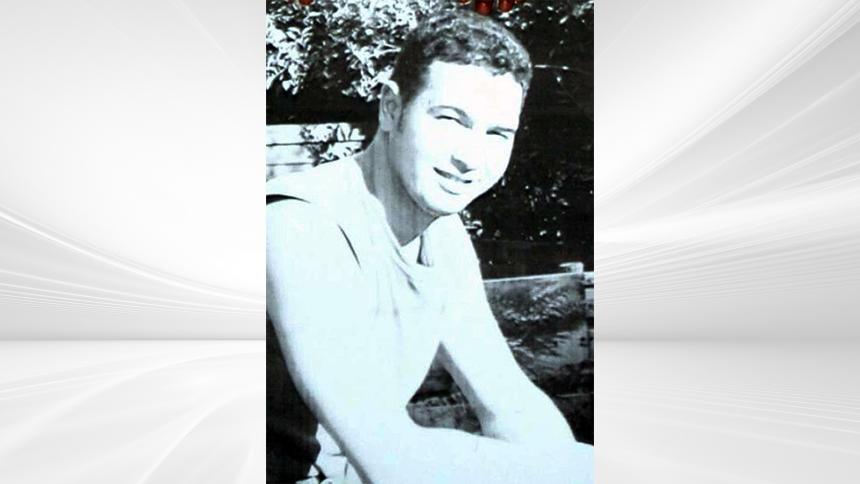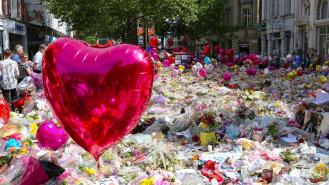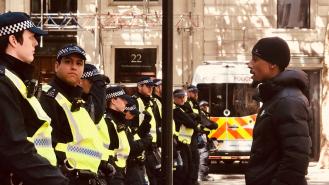
Jean Charles de Menezes: A fatal case of mistaken identity
On 21st July 2005, London experienced a series of four attempted bombings that targeted three underground stations and a bus in the Hackney area. Despite the detonator caps being activated, the bombs failed to explode, likely due to the poor quality of the hydrogen used.
These incidents were seen as a follow-up to the devastating 7th July bombings, which claimed the lives of 52 individuals a fortnight earlier. In response, the Metropolitan Police initiated an immediate investigation into the four suspects linked to these failed bombings, all of whom had survived their intended suicide attacks.
During the examination of one of the unexploded bags, authorities discovered a gym membership card containing an address on Scotia Road, Tulse Hill. This card was tentatively associated with Hussain Osman, one of the individuals under suspicion for the terrorist acts.
At 5am, surveillance teams and armed officers were dispatched to Scotia Road with a poor-quality image of Osman. Simultaneously, Cressida Dick, who held the position of the Metropolitan Police's deputy assistant commissioner at the time, established an operational command centre at New Scotland Yard. Shortly before 9am, two surveillance teams were positioned at Scotia Road. However, their concern grew as they noticed the absence of accompanying firearms teams, despite the earlier dispatch order.
A senior officer devised a strategy wherein anyone exiting the specified address would be permitted to move a short distance away, ensuring they were no longer visible to individuals inside the premises. Following this, they would be intercepted by firearms officers to verify their identity.
At precisely 9:33am, an individual was spotted leaving the location. An officer on duty, referred to as ‘Frank’, compared this person to the CCTV footage of Osman and noted a resemblance. Within moments, the operations room received word that the individual corresponded to Osman's description, prompting them to grant authorisation for officers to tail the individual and prevent them from entering the Tube system.
While walking along Upper Tulse Hill, one of the officers mentioned that the person bore a striking similarity to Osman. This individual managed to board a bus bound for Stockwell station and was accompanied by an officer identified as ‘Ivor’. As they approached, Ivor struggled to confirm the person's identity as Osman but remarked on distinctive features like ‘Mongolian eyes’.
Unbeknownst to the officers, the person they were tailing was not Hussein Osman but, in fact, 27-year-old Jean Charles da Silva e de Menezes - a Brazilian man who had been studying in Britain. He resided in a flat on 17 Scotia Road, whereas Osman occupied number 21. Both addresses were part of a block of flats accessed through a shared front door.
At 9:47am, Jean alighted from the bus at Brixton town centre and proceeded on foot to the Tube station. Upon his arrival, he discovered the station was closed. He reversed his steps and re-boarded the bus, shadowed closely by another surveillance officer. At 10:01am, Jean stepped off the bus again and made his way toward Stockwell Tube station.
Ivor had managed to position himself at the station ahead of Jean’s arrival, observing him as he approached. At 10:04am, Jean reached the escalator, accompanied closely by both surveillance officers and newly arrived firearms officers.
Cressida Dick communicated via radio, instructing the officers to intercept the man she believed to be Osman, who had just entered the train and taken a seat. Ivor positioned himself on a seat to Jean's left. A minute later, a trio of armed officers arrived at the scene, with the surveillance officers promptly pointing out Jean to them.
As they aimed their weapons at Jean, he rose from his seat, only to be wrestled back down by Ivor, who restrained him in a bear hug. At this juncture, two firearms officers, designated as 'C2' and 'C12', leaned over and discharged their firearms at Jean, resulting in his death. He sustained seven gunshot wounds to the head and one to the shoulder.
It was only after Jean had lost his life that it became evident to the officers that he was entirely unconnected to the bombing incidents - an innocent man caught tragically in the crossfire. Subsequently, they extended apologies for the fatal outcome, acknowledging it as a ‘tragedy’, and expressing profound ‘regret’.
The worldwide denunciation of the Metropolitan Police was resounding and Jean's family called for a thorough inquiry. His cousin, Alex Alves Pereira, asserted: ‘Apologies are not enough. I believe my cousin’s death was result of police incompetence.’
Brazil's foreign ministry demanded a comprehensive explanation, while former British secretary Robin Cook stated that the shooting inflicted ‘a very serious blow to our relations with a very important country which is an ally of ours’. The shooting also led to a number of protests and vigils.
In the immediate aftermath of the shooting, the Met Police commissioner, Sir Ian Blair, addressed the press, stating that Jean ‘was challenged and refused to obey police instructions’. According to Scotland Yard, his ‘clothing and behaviour at the station added to their suspicions’. The commissioner also wrote to Sir John Gleve, the Permanent Secretary at the Home Office, and gave instructions that the incident should not be referred to the Independent Police Complaints Commission (IPCC).
However, in accordance with the Police Reform Act 2002, all incidents of police shootings were required to be referred to the IPCC, prompting an immediate investigation.
This inquiry unveiled the fallacy in the statements made by Sir Ian Blair and Scotland Yard. It became clear that Jean had not exhibited any refusal to comply with police directives, nor had he displayed suspicious behaviour. Furthermore, he was dressed in jeans and a denim jacket, as opposed to the bulky clothing that the Metropolitan Police had suggested could conceal a bomb. The investigation also disproved the claim that specific shoot-to-kill code words were issued that day.
Releasing the report, IPCC chairman Nick Hardwick said: ‘Very serious mistakes were made that could and should have been avoided.’
On 22nd September 2008, the inquest into the shooting began. Testimonies from the involved officers highlighted their conviction that Jean posed a threat as a potential suicide bomber and that they believed he might trigger an explosion within the underground. The jury learned of disparities between what officers on the scene were hearing and what was being documented in the Scotland Yard control room. By the time Jean was shot, no one had positively identified him as Osman.
Ultimately, the inquest determined that Jean had not been regarded as a suspect and that the police had intended to halt and interrogate him, rather than kill him.
The inquest returned an open verdict, prompting Jean's family to denounce it as a ‘whitewash’. They accused the coroner, Sir Michael Wright, of falling short ‘in every aspect’ after he barred the jury from delivering a verdict of unlawful killing.
The year after the inquest, Jean’s family received a settlement with the Metropolitan Police Service of just over £100,000. In addition, they received substantial legal costs.









